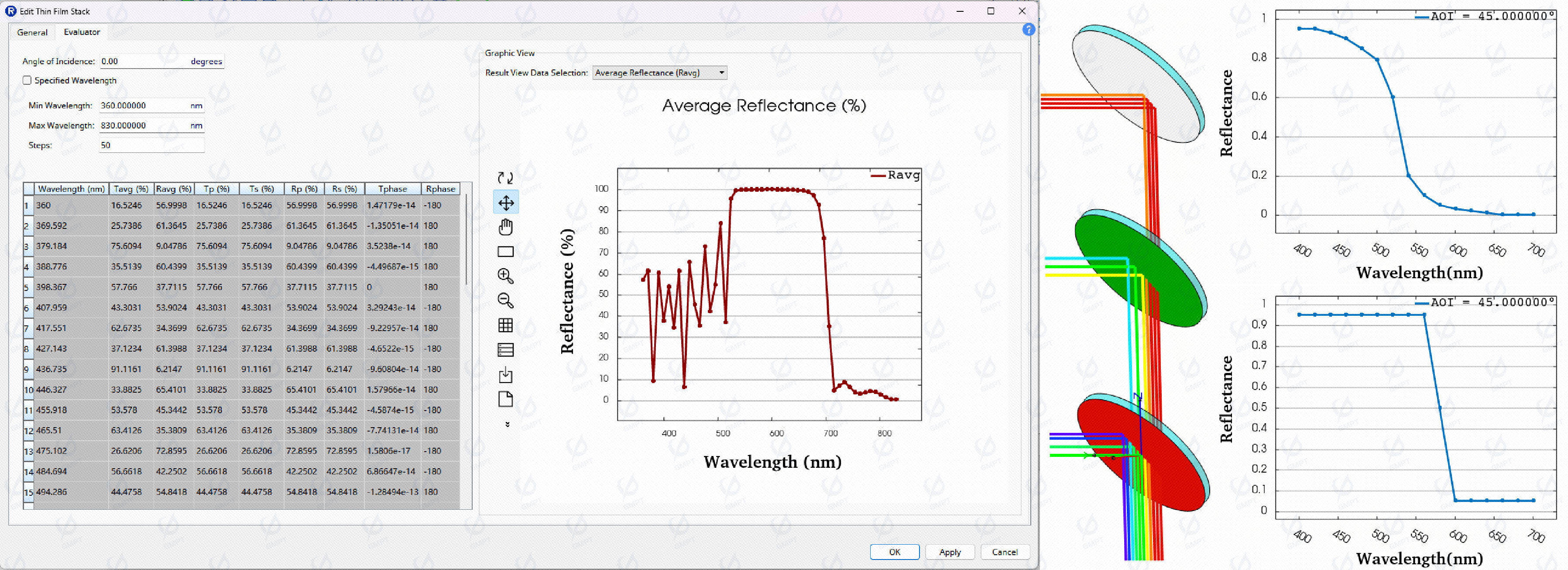Optical Property Library
GMPT, October 2024
Brief
The principle of optical film layers is to ignore the thickness of multi-layer thin film structures in simulation, and only use the phenomenon of the interaction between light and the film layer to simplify the characterization. For the most commonly used anti reflective film (Quarter wavelength anti reflector), users only need to input the center wavelength and the refractive index of the film layer material; For bandpass filters corresponding to multiple wavelengths, users can perform calculations using Thin Film Stack based on material data. In practical optical design, idealized thin film interference models may not be sufficient to fully describe the behavior of bandpass filters, especially in the presence of material absorption, scattering, or microscopic defects in the film layer. Therefore, by experimentally measuring the reflectance and transmittance data at different wavelengths and incident angles (measurement based), the optical characteristics of the filter can be more accurately defined. These measurement data can be directly input, replacing the theoretical calculations of reflectance and transmittance, thus more accurately describing the actual performance of the filter in simulation. Using this method can better cope with errors and unfavorable factors in actual manufacturing.
Coating Model List
There are three main definitions of optical film layers from simple to complex:
- Quarter wavelength anti reflector
- Measurement based Reflectance and Transmittance Data
- Thin Film Stack
They represent typical ideal film layers, simulated film layers based on imported measured data, and film layer characteristics calculated from wave optics theory based on material properties.
